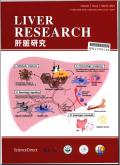Bile acids and their receptors in hepatic immunity
IF 2.1
Q2 Medicine
引用次数: 0
Abstract
Similarly to conventional steroids, bile acids function as signaling molecules, acting on a family of membrane and nuclear receptors. The best-characterized bile acid-regulated receptors are the farnesoid X receptor, activated by primary bile acids, and the G-protein-coupled bile acid receptor 1 (also known as Takeda G protein-coupled receptor 5), which is activated by secondary bile acids, such as lithocholic acid (LCA) and deoxycholic acid. Both the farnesoid X receptor and G-protein-coupled bile acid receptor 1 are expressed in cells of innate immunity, monocytes/macrophages, and natural killer cells. Their activation in these cells provides counter-regulatory signals that are inhibitory in nature and attenuate inflammation. In recent years, however, it has been increasingly appreciated that bile acids biotransformations by intestinal microbiota result in the formation of chemically different secondary bile acids that potently regulate adaptive immunity. The 3-oxoLCA and isoalloLCA, two LCA derivatives, bind receptors such as the retinoic acid receptor-related orphan receptor gamma t (RORγt) and the vitamin D receptor (VDR) that are expressed only by lymphoid cells, extending the regulatory role of bile acids to T cells, including T-helper 17 cells and type 3 innate lymphoid cells (ILC3). In this novel conceptual framework, bile acids have emerged as one of the main components of the postbiota, the waste array of chemical mediators generated by the intestinal microbiota. Deciphering the interaction of these mediators with the immune system in the intestine and liver is a novel and fascinating area of bile acid renaissance.
胆汁酸及其受体在肝脏免疫中的作用
与传统类固醇类似,胆汁酸作为信号分子,作用于一系列膜和核受体。最具特征的胆汁酸调节受体是farnesoid X受体,由初级胆汁酸激活,以及G蛋白偶联胆汁酸受体1(也称为武田G蛋白偶联受体5),由二级胆汁酸,如石胆酸(LCA)和脱氧胆酸激活。farnesoid X受体和g蛋白偶联胆汁酸受体1均在先天免疫细胞、单核/巨噬细胞和自然杀伤细胞中表达。它们在这些细胞中的激活提供了具有抑制性质和减轻炎症的反调节信号。然而,近年来,人们越来越认识到肠道微生物群对胆汁酸的生物转化会导致化学上不同的次级胆汁酸的形成,从而有效地调节适应性免疫。3- oxolca和isoalloLCA是两种LCA衍生物,结合仅由淋巴样细胞表达的视黄酸受体相关孤儿受体γt (RORγt)和维生素D受体(VDR)等受体,将胆汁酸的调节作用扩展到t细胞,包括t辅助17细胞和3型先天淋巴样细胞(ILC3)。在这个新的概念框架中,胆汁酸已成为后生物群的主要组成部分之一,后生物群是由肠道微生物群产生的化学介质的废物阵列。破译这些介质与肠道和肝脏免疫系统的相互作用是胆汁酸复兴的一个新颖而迷人的领域。
本文章由计算机程序翻译,如有差异,请以英文原文为准。
求助全文
约1分钟内获得全文
求助全文

 求助内容:
求助内容: 应助结果提醒方式:
应助结果提醒方式:


